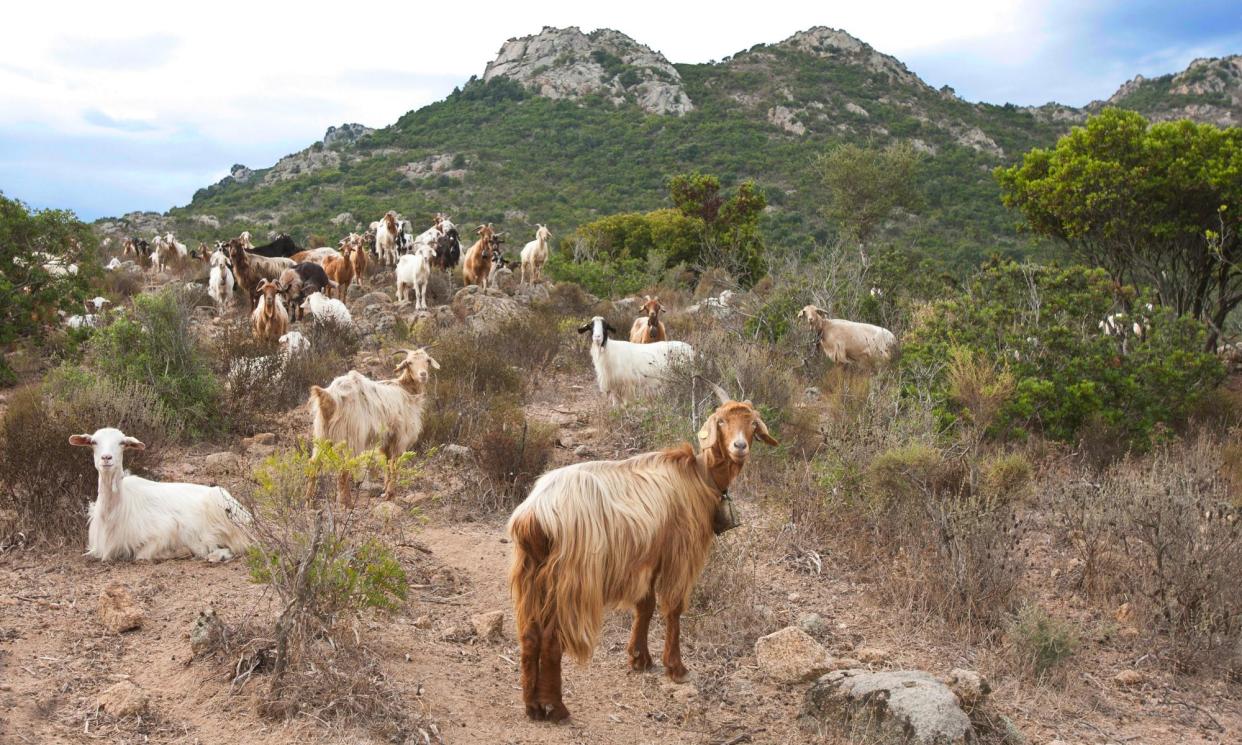Great goat giveaway: Italian island inundated with adoption offers

When the mayor of a remote Italian island grappling with an overpopulation of feral goats offered to give the animals away, he anticipated a smattering of interest from farmers on neighbouring isles who were perhaps keen to boost their production of ricotta cheese.
Related: Get your goat: Italian island overrun by the animals offers to give them away
But as news of his “adopt a goat” initiative spread beyond Alicudi, he received a flurry of offers from around the world – not just from Europe, but also the US, and even from an animal-lover in Nigeria.
Riccardo Gullo came up with the novel idea after a census estimated the number of feral goats on Alicudi, the smallest of Sicily’s Aeolian archipelago, was six times the island’s year-round human population of 100.
Gullo will need to be judicious in his selection as the demand for goats now far outweighs supply.
“The total from all the offers was for 1,900 goats,” he said. “The response has been great, but we’re going to have to turn the majority down as the number of goats on the island is believed to be 600 or so.”
His more pressing challenge is how to capture the animals and transport them off Alicudi, a 5 sq-km (1,235-acre) island with a dormant volcano that is a two to three-hour boat ride from mainland Sicily.
The person tasked with the job is Giovanni Dell’Acqua, the director of rural development in Messina for Sicily’s regional council. “It’s not going to be easy, but we need to move quickly and effectively,” he said.
Alicudi’s goat dilemma began two decades ago, when a small number of the animals were brought to the island by farmers. But when the focus of the island’s economy shifted to tourism, the farmers left the goats to their own devices.
“It would be like me leaving my pet dog in the middle of the road,” said Dell’Acqua. “The goats reproduced excessively and here we are today … we should have kept better vigilance.”
For years, the goats were a charming rare sight tucked away on the rocky far side of the island. But then the animals, savvy at navigating the steep cliffs, started to gravitate towards the inhabited area, damaging lush green vegetation, causing havoc in gardens and allotments, knocking away portions of dry stone walls and even wandering into people’s homes.
Lorcan O’Neill, an art gallery owner in Rome who has a house in Alicudi, said people on the island were previously happy to indulge the goats “when there was some sense of balance”.
“But now, with no predators, and no husbandry, it feels like an infestation which will destroy the fragile ecosystem that has existed on this poor, almost barren island for centuries,” he said.
O’Neill described the impact the goats’ presence has had on the island. “They eat everything green in sight. Forget about growing anything, decorative or for the kitchen – the goats can get anywhere and eat the lot!
“It’s dangerous to go for a walk up the mountain or come in close to shore at sea as rocks are constantly falling – it’s a nightmare. And the buck goats are enormous, with heavy horns, and have become aggressive.”
Dell’Acqua said another worry is that the animals, which weigh up to 120kg (265lbs) and have 50cm (20in) horns, might gore someone. “People are afraid.”
A team of wildlife experts will travel to Alicudi next week and have started to devise a capture plan, which will either involve ensnaring the goats in nets or luring them towards enclosures with food.
“Enclosing them will be very difficult – they have had such freedom for 20 years and so we expect lots of kickback,” said Dell’Acqua.
Related: Mountain goats of Great Orme hit Llandudno – in pictures
Once caught, the goats will undergo blood tests to check for illnesses. But then the experts will need to work out how to get them from the top of the island, which involves a steep descent, to the port, from where they will be shipped to Milazzo in Sicily. Once there, they will be quarantined for two months.
“Alicudi is very rocky and, objectively, it will not be easy to transport them,” said Dell’Acqua.
The aim is to capture as many goats as possible before the tourist season gets under way in mid-June, before resuming in September. “Not a single goat must be left behind,” said Dell’Acqua.
Meanwhile, Sicilian authorities will decide who gets to adopt one. Anyone who wanted to take one in as a domestic pet will be disappointed.
“While it was kind of people to offer, the goats will only go to farmers, people who know how to raise them and can give them the environment they need,” Dell’Acqua said. “I’m hoping they will all be in Sicily or other regions in southern Italy, as that way we can limit the stress that transportation will cause the animals.”


